It’s been almost a month since I last typed up something for this old blog, and, I think, as much time since I last saw a B&W movie… now, that’s a long time. Luckily, Holiday came to rescue; I had previously signed up for The Spencer Tracy and Katharine Hepburn Blogathon, hosted by Love Letters to Old Hollywood & In The Good Old Days of Classic Hollywood, and I’m glad I did because, honestly, I needed some good old late 30s screwball in my life after a while.
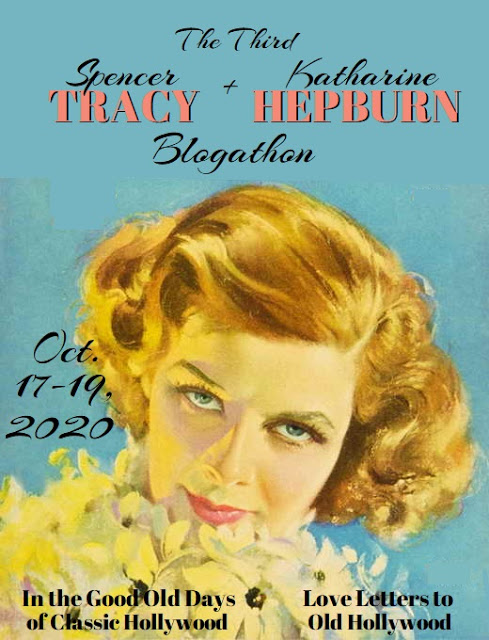
*
With seeing Holiday I have completed my list of Hepburn-Grant films (Sylvia Scarlett, Bringing Up Baby, Holiday & The Philadelhia Story). three of which were directed by George Cukor. Which one was my favorite, I honestly don’t know; but as for Holiday, I can say I loved this one so very much. It’s incredibly entertaining, exciting, funny, and has such lovable and quirky characters.
The plot revolves around a “self-made” man called Johnny Case (Cary Grant), who is surprised to learn that his (recent) fiancée Julia Seton (Doris Nolan) leads a very posh lifestyle in a spacious Park Avenue Mansion. As he meets her family, his somewhat idealistic ideas aren’t met with much understanding; the only one who sems to click with him is Julia’s sister Linda (Katharine Hepburn), the “black sheep” of the family.
The film was based upon the 1928 play written by Philip Barry (who also wrote The Philadelphia Story). I just learned that Holiday had been filmed before 1938: the 1930 version cast Mary Astor as Linda, but Edward Everett Horton is the only one who appeared in both versions, repeating his role as Nick Potter, an university profesor and Johnny’s eccentric friend, who makes a great pairing with his wife Susan Potter (played by Jean Dixon). Sorry, but I have to rave on about these two characters for a while. Honestly, the movie wouldn’t have been the same without them; in my opinion they are the funniest part of the film and probably my favorite characters overall. And let’s be honest, they are just so cute. I think that just Edward Everett Horton’s presence can make any situation about 100 times funnier; now that I think of it he’s probably my favorite character actor.
To demosntrate a bit what I’m talking about, one conversation between the Potters goes like this:
Nick Potter [referring to the massive Seton home]: You know, this reminds me a little of the palace of Caligula. You remember Caligula, don’t you dear?
Susan Potter Oh, very well indeed. Whatever became of him?

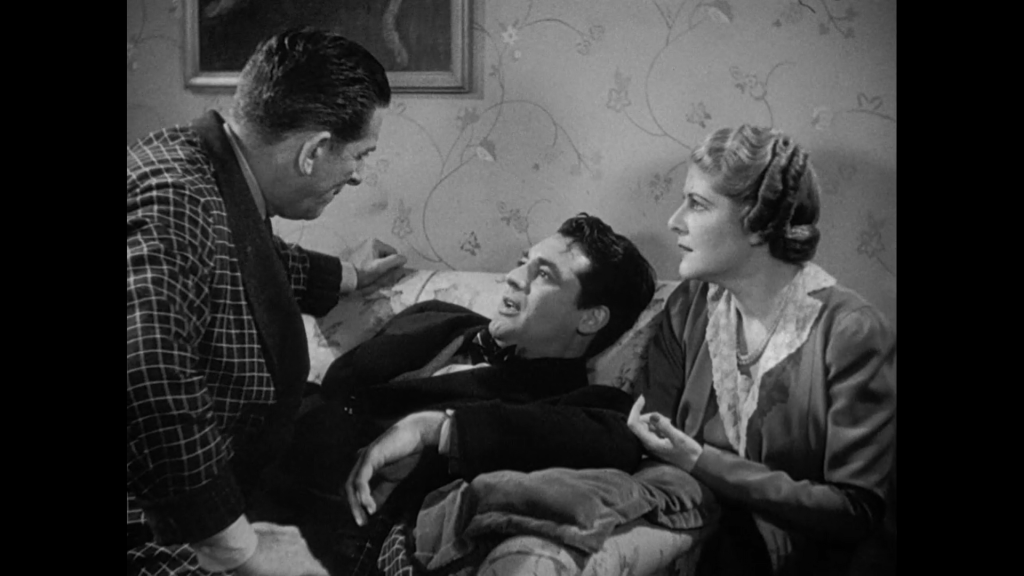
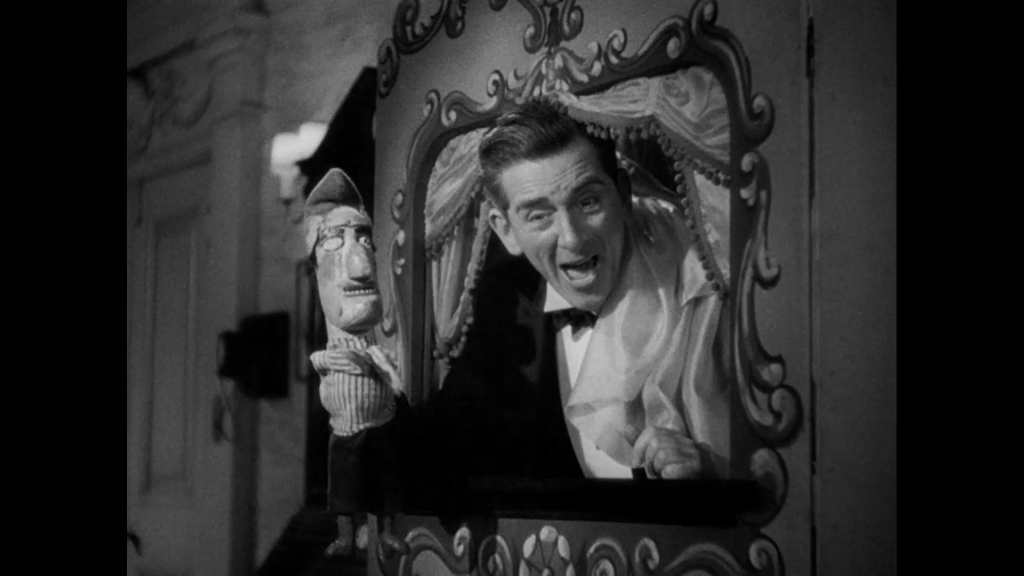
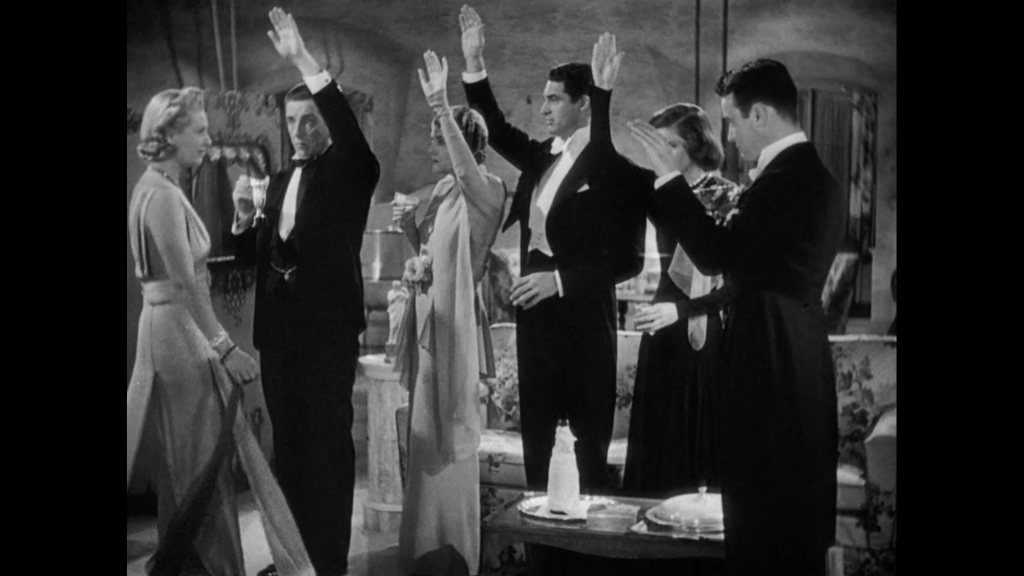
What’s interesting about this film is also its structure in regards to the locations. The largest, central part of the movie plays in the Setons’ mansion. But in the beginning and by the ending of the film we have a scene in the Potters’ house, and two brief scenes in the servants’ hall. It’s not a perfect circular structure as there is also a short scene in the church and ending again takes place in a different location (a ship), but I still found it interesting.
When it comes to the mansion, there is one particularly interesting room where Linda likes to spend time, and it is the only place in the whole house where she feels at home. It is a sort of a play room filled with toys, instruments, old photos and, I imagine, all sorts of quirky knick-knacks. As Linda explains, the room was their mother’s idea because Mrs Seton wanted a place where people could come and have fun. Indeed, this quirky playroom is the place where the funniest moments of the film take place. The funniest, but also the saddest and most dramatic ones, like the one where Linda dances with Johnny or when she gets very upset and confronts her father. It is in this room where Linda tells Johnny about their childhood and her dreams and failed attempts at different professions; and in the same room he tells her about his dreams and plans. If I’m not loading too much meaning into a single room, I’d say that it plays quite an important role in the film.

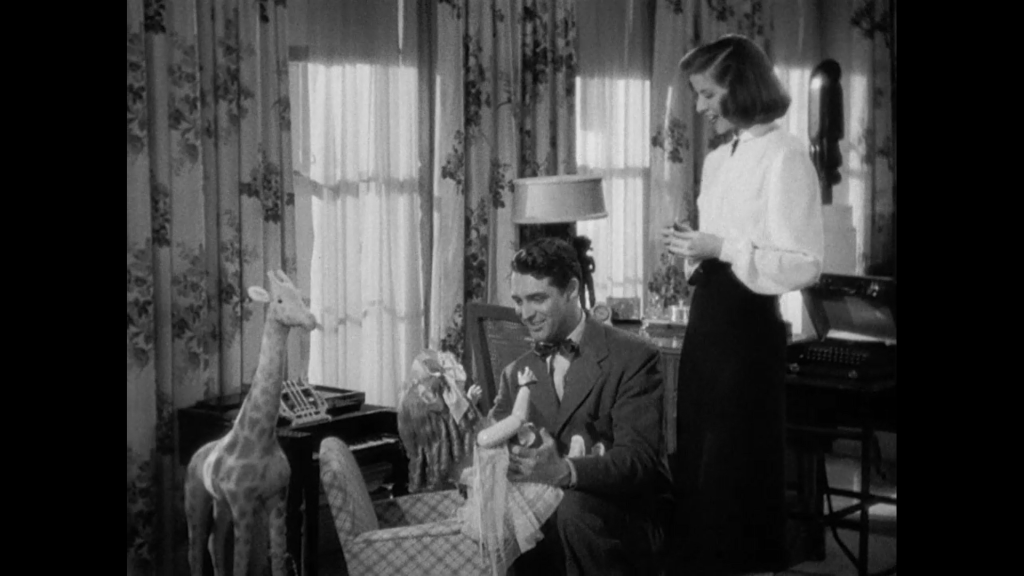
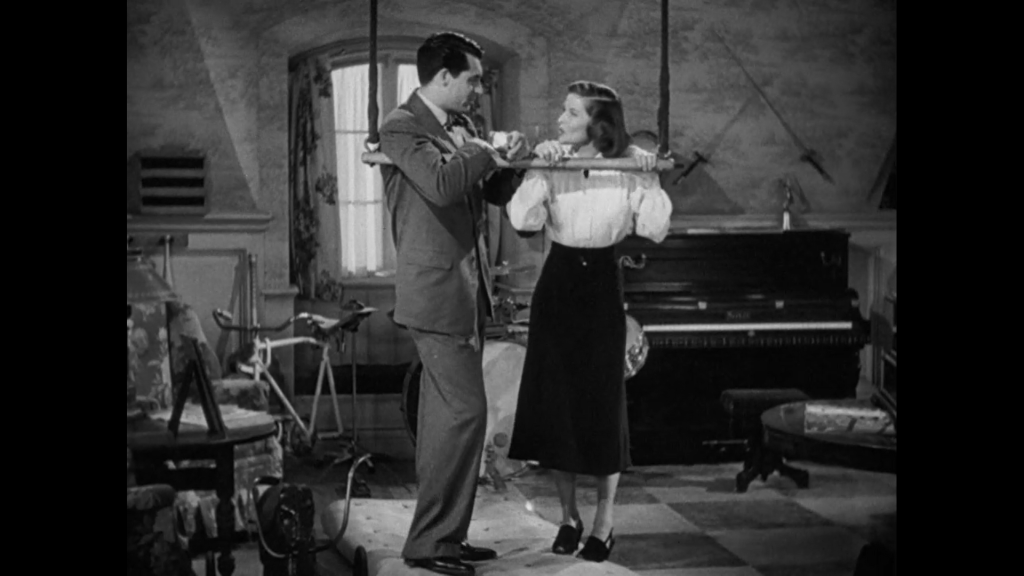
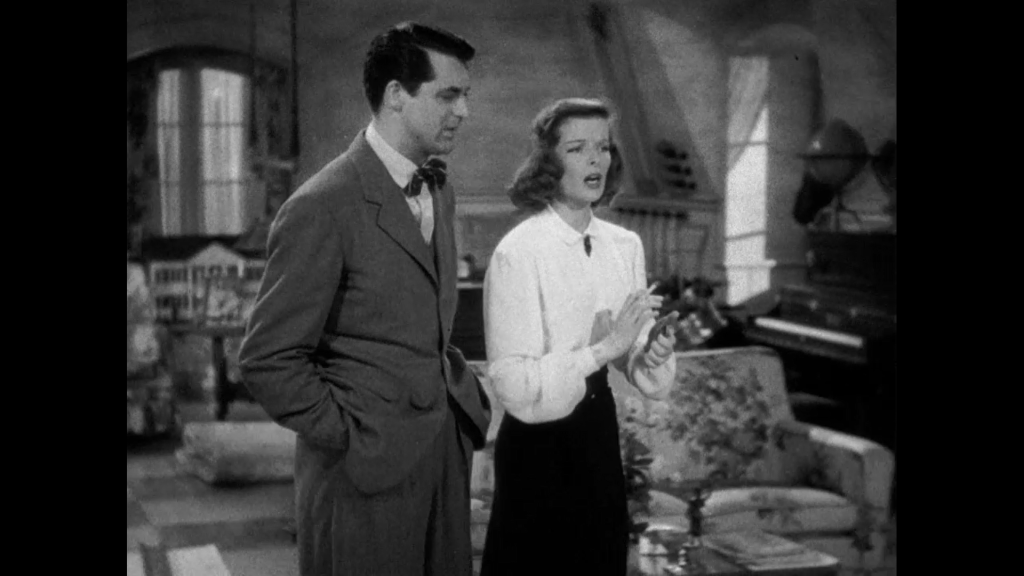
It’s quite obvious at this point that Linda and Johnny get on really well in a short time. Even though Julia is his fiancée, they don’t talk with each other about much else other than his job plans and how to persuade her father to let them get married; their conversations seem more business-y than honest and confidential. And yes, Linda develops feelings for Johnny, and for the most part of the film it’s heartbreaking to see how she tries to save Julia’s and Johnny’s engagement no matter what, probably led by guilt for falling for her sister’s fiancé. As viewers, it might be a bit difficult to see why Julia and Johnny got engaged in the first place, as they are clearly completely different. As for Julia, she is introduced to us as a very sweet and likable character, but as the film progresses she turns out to be cold, selfish, and way too focused on money and social status. In fact, she is very much like her father, and is actually the only one of the children that resembles him. I personally wasn’t even annoyed with her character, just surprised and a little sad to see what she’s really like.
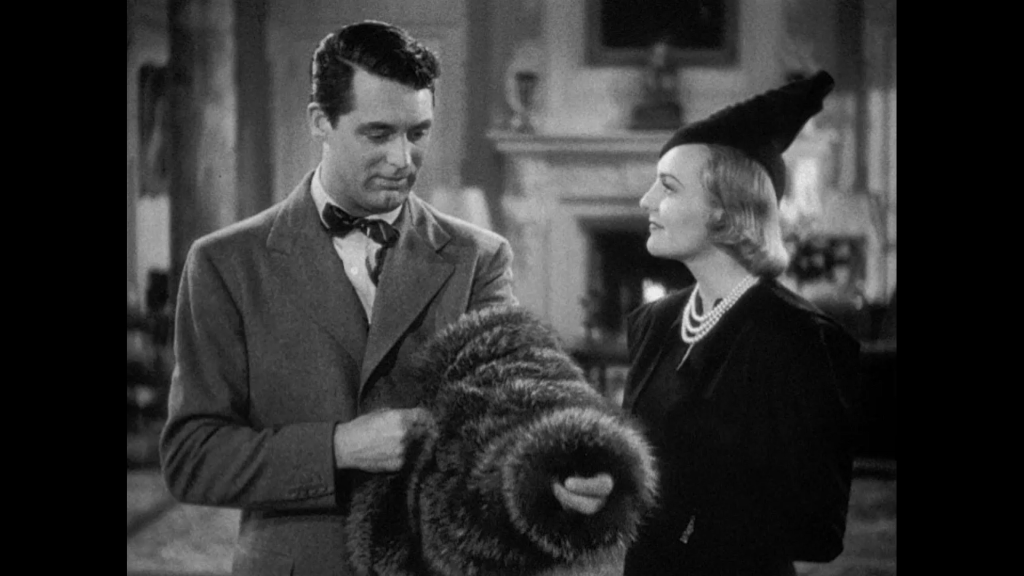

If Julia is supposed to lose our sympathies by the end, one character that become more likable as we get to know him is their younger brother Ned. He first appears as a typical spoilt, alcoholic kid of a rich father with no interest for anything whatsoever, but as we get to know him we realize that he, just like Linda, is repressed by their father’s authority and harshness. But Ned lacks Linda’s determination and strength of character, and he finds solace in drinking. He doesn’t show much sympathy for Johnny Case at first, but we can see later that he’s rooting for him and Linda. He also doesn’t seem to like Julia very much; if by the beginning of the film Linda and Julia appear to be close and confidential with each other, by the end it’s Julia and Ned who prove to be a better team.
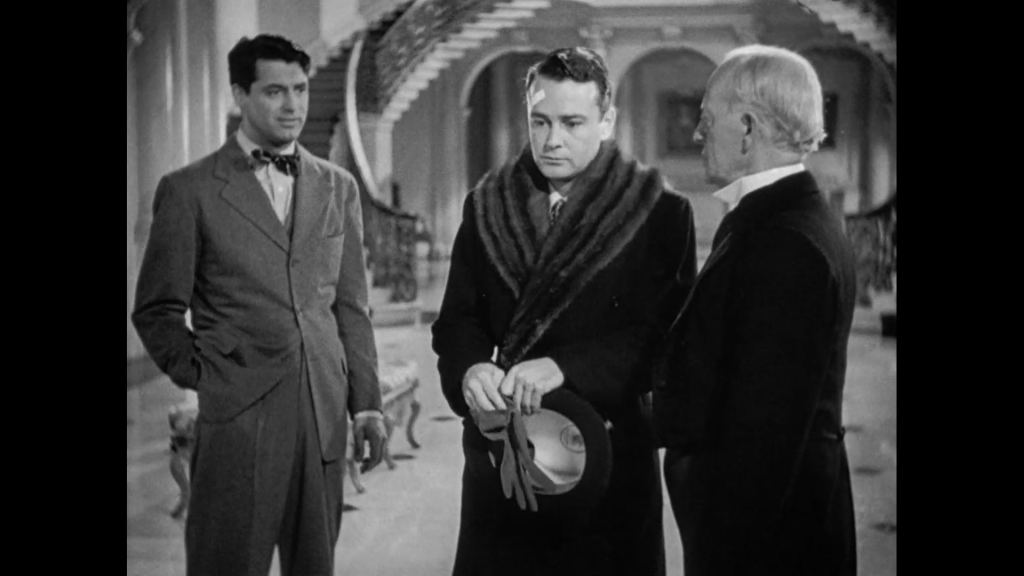

Now if a few words need to be said about Mr Seton, the father of the Seton family, he is probably the least likable character of all (if we exclude Cram & Seton cousins). His only “warm” moment I can think of is when he realizes that Johnny is wearing his tie, and the whole family starts laughing. This is also about the only moment that we get to see where the Seton family looks united.
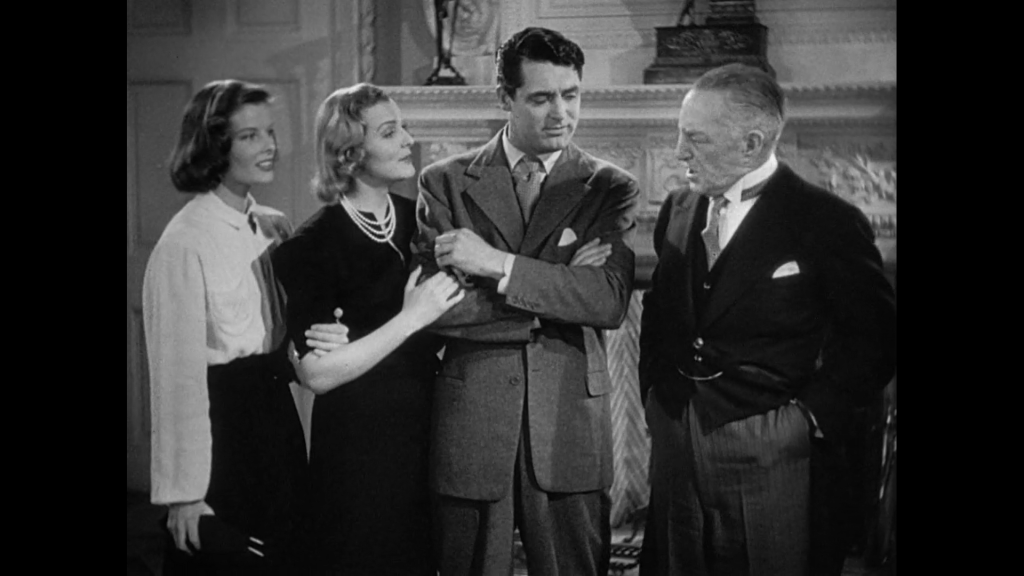


Now, I don’t want to spoil the ending for you completely if you haven’t seen the film yet. So I think I’ll leave you with a back flip from Cary Grant (if I’m not wrong, he does 3 back flips in the movie, plus some other acrobatic shenanigans with Kate Hepburn – it’s marvelous).

I think the costume designer, Robert Kalloch, also deserves his own mention; to be honest, I mostly paid attention only to Kate Hepburn’s gowns, but all of them are so elegant and beautiful. I’d say that her look below, with a scarf and a diamond necklace, is quite iconic. I was familiar with that look before, but I had no idea that it was from this movie.
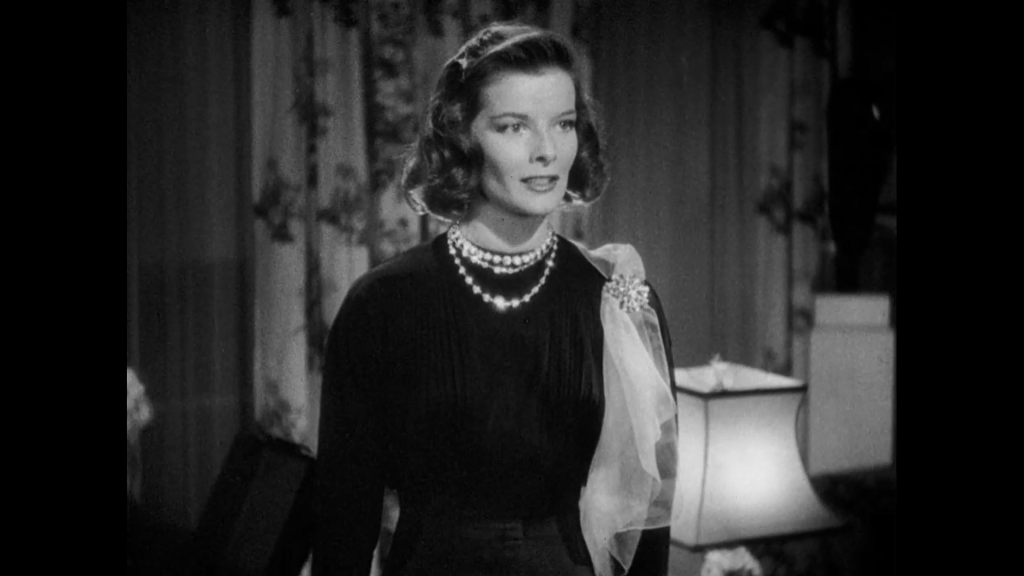

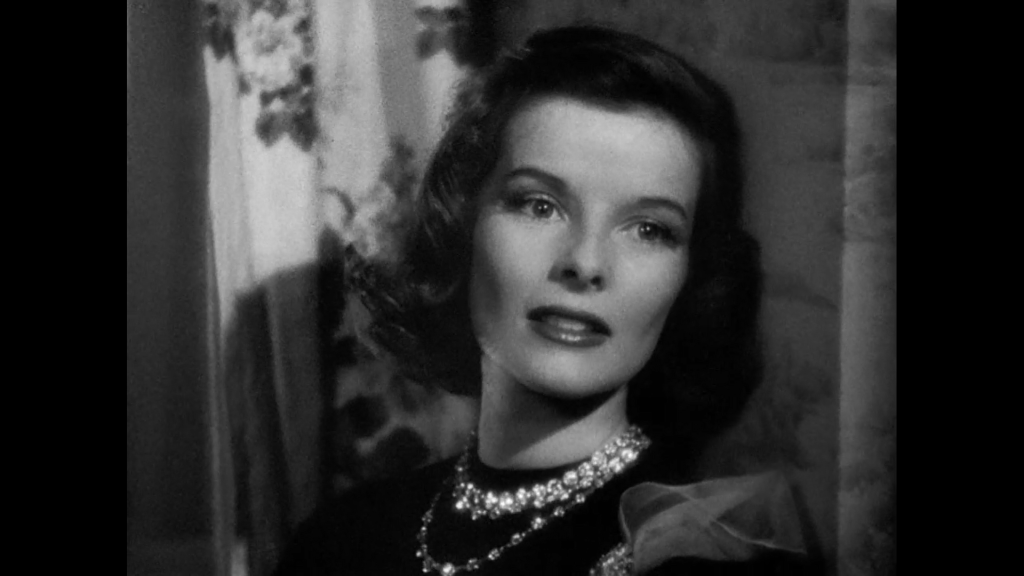
*
Thanks again to In The Good Old Days of Classic Hollywood and Love Letters to Old Hollywood for hosting this blogathon. I enjoyed writing about Holiday very much!
Read all of the other entries here!
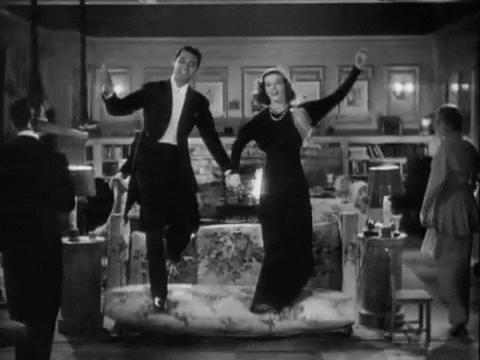
I adore this movie for all of the reasons you pointed out. It’s just brilliant, and the cast is top-notch. I love that you singled out Edward Everett Horton and Jean Dixon at the beginning, too. They are so delightful, I wish we had a sequel about their continued adventures with Cary and Kate!
Thanks for contributing this great review to our blogathon!
LikeLiked by 1 person
Ohh yes! I’d probably even watch a movie dedicated only to them, they’re just so fun 😅
It was my pleasure! Thank you for hosting and for your kind comment!
LikeLiked by 1 person